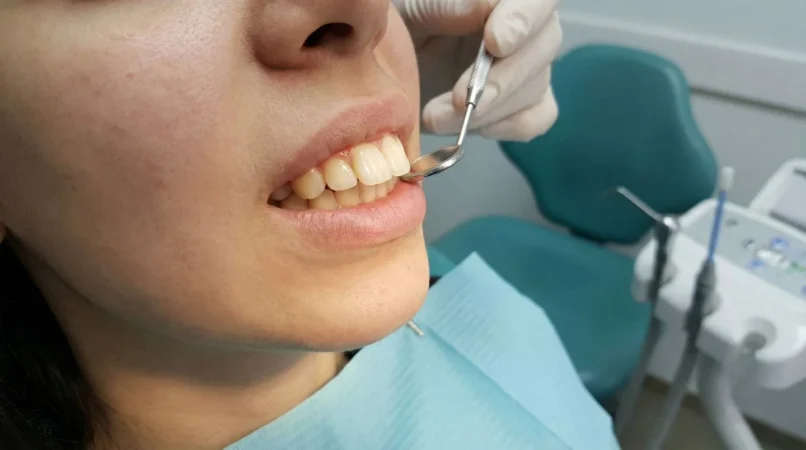Table of content
Before getting an implant, patients go through an oral assessment to find out what’s best for them. It’s during this evaluation that many find out their jawbone isn’t strong enough for an implant.
We know it’s scary, so don’t worry if you’re in the same boat. Good news is modern dentistry has advanced, and that’s good for you and everyone! To help fortify the jawbone and get your implant, there are now more options available.
In the following piece, we will go over everything you need to know regarding bone health and implants. Furthermore, you will learn about the many treatment options available before undergoing your surgery.
Understanding Bone Deficiencies and Causes
Bone loss or bone deficiencies occur when the jawbones lack sufficient density or volume. The disintegration of bone tissues doesn’t just start overnight. It usually starts within 2 months after losing your tooth.
Here’s the quick rundown
When you lose a tooth, your jawbone no longer gets the constant stimulation it used to get from daily activities like chewing and biting. And without that pressure from the tooth root, the bone tissues will break down over time.
As a result of this bone loss, having an implant can be very difficult, if not impossible. The only option would be to undergo bone-strengthening treatment first before an implant.
Common Causes of Bone Deficiencies
Below are some of the common causes of bone deficiency.
Gum disease
Gum disease (which is also known as periodontal disease) is one of the biggest culprits behind bone deficiency. What this inflammation does is that it gradually eats away at the jawbone tissues, causing them to weaken over time. These are a few typical triggers for it.
- Tobacco use
- poor dental hygiene
- Diabetes
- Deficiencies in nutrition
- Changes in hormones
- Bruxism, which is another name for teeth grinding
Tooth extractions
When a tooth is extracted, the surrounding tissues no longer receive stimulation from chewing. Without the natural pressure, the bone would simply crumble. The bad news is that the jawbone will weaken with time, making it impossible for doctors to place an implant there.
Untreated oral infections
Various oral infections can also cause bone loss. Oral infections like dental abscesses, periodontitis, and many other bacterial infections are deadly because they cause inflammation. What this means is that if they are not treated on time, they will, in no time, spread to the gumline and destroy the soft tissues that hold your teeth in place.
Nutritional Deficiencies
Lack of essential nutrients like Vitamin D and iron/calcium can also lead to bone loss.
There is some kind of binary relationship between these two nutrients. While calcium’s main job is to make bones strong and dense, vitamin D’s main job is to help the body absorb calcium more easily.
Now, if these two nutrients are not found in the bones (including those in the jaw), the tissues will disintegrate.
Family history
Medical studies also show that genetics also affects bone density. This means if your family has a history of weak bones, you might experience the same.
Criteria Dentists Assess Before Declaring A Patient Ready For An Implant.
Before determining whether a patient meets the requirements for an implant, dentists consider the following important factors.
- They check if the surrounding tissue is free from any infection, such as gum disease, etc.
- They also look at the width and height of the bone. For standard implants, it is important that the bone width has a minimum of 6 mm. For the height, however, 10mm is just about enough.
- They also check the bone density to know if it is firm enough to secure the implant.
Risks of Implant Placement with Bone Loss
Ideally, if you don’t meet any of the requirements, no “qualified” dentist will provide you with an implant. However, let’s imagine for educational purposes that you proceeded with the procedure in the absence of sufficient bone. What do you reckon will happen? Let’s investigate!
- The implant will fall out due to instability. You may even suffer some discomfort along the line.
- You also run the risk of contracting other forms of infection.
- You will also not get the desired aesthetic result. For example, the implant may look unnatural or uneven.
- Perhaps unsurprising, implants placed in weak or insufficient bone are far more likely to fail prematurely.
- You will eventually spend more than your initial budget because, ultimately, you will need additional corrective procedures after the implant. For example, you will most likely require bone grafting, surgical removal, or full replacement at the end of the day.
Available Techniques To Manage Bone Deficiencies Before Implant
Thanks to modern techniques and tools, you can now rebuild and strengthen your jawbone before your surgery.
As Dr. Yilmaz pointed out, “Technology has revolutionized how we plan implant treatments.” He continues, “With 3D scans, I can see exactly what we’re working with.” There are no surprises during surgery, which means better outcomes for patients.”
Below are some of the most common techniques available
Bone Grafting
Bone grafting, simply put, involves the addition of new bone material to the deficient parts. The bone materials can be sourced from places like
- Your body (Autograft)
- Human donor (Allograft)
- From animals (Xenograft).
They can also be grown in a lab (Synthetic Materials).
Note: You must look after yourself after your bone graft treatment in order to prevent complications. A few general tips to aid with your recovery are listed below!
- Keep your head up while you sleep.
- Take prescribed painkillers.
- To lessen swelling, apply ice packs.
- Steer clear of demanding activities.
Get Expert Bone Deficiency Treatment at DentSpa
Bone deficiencies do not have to prevent you from receiving dental implants. With careful supervision, effective replacement is absolutely possible.
At DentSpa, we take great satisfaction in offering complete solutions for even the most challenging bone loss situations. With a focus on oral surgery, our highly skilled dentists provide cutting-edge bone grafting and regeneration methods.
We don’t treat everyone in the same way! We carefully collaborate with our clients to understand their unique problems before customizing our treatment programs to meet their requirements. Also, because we value openness, our prices are transparent and free of hidden fees.
Our care doesn’t end after the surgery. We are also on standby to provide comprehensive aftercare services to ensure that our patients heal properly.
That said, whatever your jawbone condition is, don’t let it deter you from getting your smile back. Our dental clinic has the expertise, experience, technology, and surgeons that can help you regain your confidence and oral function in no time at all.
Are you ready to get started on your journey toward a confident, healthy, and stronger smile? Then don’t hesitate to schedule your consultation with us today, and let’s prepare a treatment plan for you!
Frequently asked questions
How much time does it take for bone grafts to heal before dental implants are placed?
The size of the graft, the surgery site, and the rate at which a patient recovers all tend to affect healing time. The majority of bone grafts, however, should heal in three to six months.
Does a family history of bone diseases affect implant success?
Unfortunately yes. It has been observed that conditions like Paget’s disease or osteoporosis can affect bone health and implant outcomes. And that’s why it’s important to disclose your medical and family history during consultation
Are bone grafting operations painful?
Yes and No. You won’t feel any pain during the procedure because you’ll be given local anesthesia. Post-surgery pain is mild to moderate, but prescribed painkillers can help manage that.
Can vitamin D deficiency cause bone loss?
Yes! Lack of vitamin D nutrients in the body can cause bone pain and slow osseointegration between implants and bone tissue. That’s why checkups are important.
How do I know I don’t have enough bone for dental implants?
Bone loss can only be diagnosed by a dentist using 3D imaging and other specialized tools. But there are some warning signs to look out for, such as facial changes, tooth loss, chewing difficulties, and many more.

















 70%
70% 

